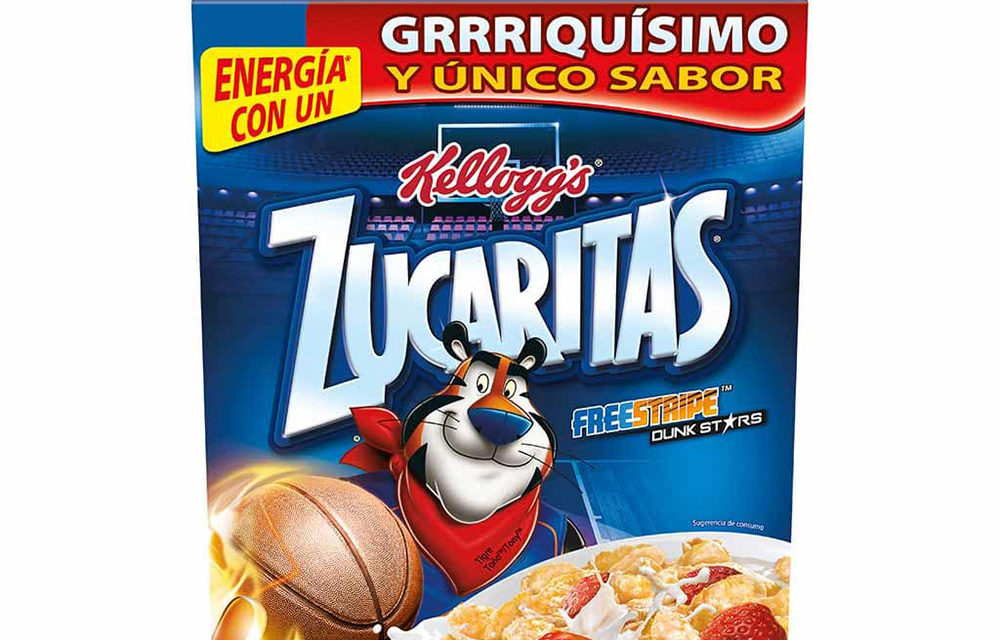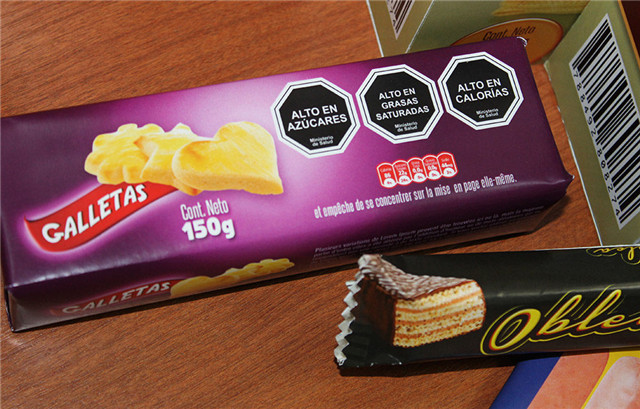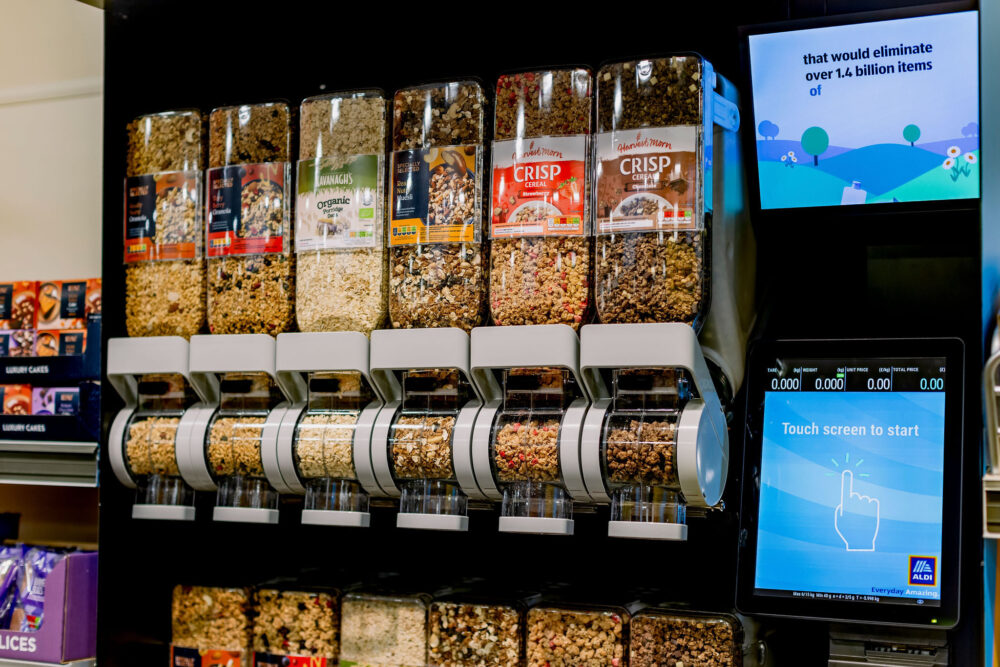We use cookies to operate this website and to improve its usability. Full details of what cookies are, why we use them and how you can manage them can be found by reading our Privacy & Cookies page. Please note that by using this site you are consenting to the use of cookies.
Food
Consumer Information on Packaging to Fight Obesity
2018-10-23
Water Ice – Flashbacks to Childhood
Dietitians, nutrition institutes and scientists do their best – but words alone don’t seem to make an impact on those extra pounds. New legislative proposals are now designed to make consumers rethink their choices in a different way: higher taxes, less advertising and stop signs on packaging.
Chile as a Pioneer
Chile is considered a country whose population is truly suffering from epidemic obesity among both grown-ups and also children and young people. To counteract a further rise in this general body-fat increase the government of this South-American country has adopted a set of mandatory measures. As a result, especially packaging designers and marketing strategists are subjected to tight limits. Food and beverage producers of the affected market segments need to gear up for the following regulations that have either entered into force already or are planned:

‘Tony the Tiger’ does not bear a black loop with a warning note on sugar content above its head yet. Only the ingredients are listed on this packaging. Photo: Kellogg's ® Zucaritas ®
Advertising:
1. No marketing targeting children below the age of 14
2. Ban on TV commercials promoting unhealthy snacks during children’s programmes; from 1 January 2019: total advertising ban on the radio and TV between 6 am and 10 pm
3. Ban on junk food sales – including ice cream and chocolate – at schools
4. 18% tax on beverages containing more than 6.25 gr of sugar per 100 millilitres
Packaging:
1. No cartoons on packaging
2. No sales of sweets with attached toys
3. Imprint of clearly visible, black warning signs on packaging front pointing to unhealthy ingredients such as saturated fatty acids or sugar, salt and calories once set limits are exceeded (per 100 gr ten grams of sugar, 400 gr of salt, 275 calories)
The effects can already be felt now: consumers take to packaging with warning signs about 25% more often. Producers have to circumvent the warning signs to be able to increase their sales again. Only option: the processing of healthier ingredients.
Packaging with Health Information
Not only in Chile, but also in many generally Western industrialised nations, obesity is becoming an increasing problem that affects both the private health of the persons concerned and requires public investment in treating the ensuing disorders.
In the USA at present some 23.5 million children and adults are considered obese. This amounts to triple the number in 1970. Nevertheless, children and young people are extremely popular target groups for advertising for crisps, cookies, burgers and the like. In the USA alone every year some US$ 17 billion are spent on marketing such products. Children’s cartoons can be found on packaging almost everywhere. Rights in packaging design are not expected to be curtailed any time soon in the land of opportunity.

In Chile the packaging of food that exceeds a set threshold value of sugar, salt or calories features eye-catching warning notes on a black background. Photo: Achipia, Ministerio de Agricultura
Unlike in Canada and Taiwan: these two countries have already adopted legislation that limit the use of toys in food packaging and stipulate that unhealthy ingredients must be highlighted visibly on food packaging. In France the packaging of products containing food enriched with fat, salt or sweeteners already feature a health note: five portions of fruit or vegetable a day are important for your health.
Sports Notes
British consumer advisors pursue a different strategy: if it was up to them the packaging of sweet or high-fat foods should feature a mandatory recommendation for physical exercise. The message could be along the lines. “if you eat this chocolate bar you can burn the calorie intake with 200 squats and running 1,000 metres around the block.” Pictograms with mountain runners on coke bottles or labels with exercise instructions on chocolate bars – experts feel that this is the right way to avoid increasing obesity.
Dietitians, nutrition institutes and scientists do their best – but words alone don’t seem to make an impact on those extra pounds. New legislative proposals are now designed to make consumers rethink their choices in a different way: higher taxes, less advertising and stop signs on packaging.
Chile as a Pioneer
Chile is considered a country whose population is truly suffering from epidemic obesity among both grown-ups and also children and young people. To counteract a further rise in this general body-fat increase the government of this South-American country has adopted a set of mandatory measures. As a result, especially packaging designers and marketing strategists are subjected to tight limits. Food and beverage producers of the affected market segments need to gear up for the following regulations that have either entered into force already or are planned:

‘Tony the Tiger’ does not bear a black loop with a warning note on sugar content above its head yet. Only the ingredients are listed on this packaging. Photo: Kellogg's ® Zucaritas ®
Advertising:
1. No marketing targeting children below the age of 14
2. Ban on TV commercials promoting unhealthy snacks during children’s programmes; from 1 January 2019: total advertising ban on the radio and TV between 6 am and 10 pm
3. Ban on junk food sales – including ice cream and chocolate – at schools
4. 18% tax on beverages containing more than 6.25 gr of sugar per 100 millilitres
Packaging:
1. No cartoons on packaging
2. No sales of sweets with attached toys
3. Imprint of clearly visible, black warning signs on packaging front pointing to unhealthy ingredients such as saturated fatty acids or sugar, salt and calories once set limits are exceeded (per 100 gr ten grams of sugar, 400 gr of salt, 275 calories)
The effects can already be felt now: consumers take to packaging with warning signs about 25% more often. Producers have to circumvent the warning signs to be able to increase their sales again. Only option: the processing of healthier ingredients.
Packaging with Health Information
Not only in Chile, but also in many generally Western industrialised nations, obesity is becoming an increasing problem that affects both the private health of the persons concerned and requires public investment in treating the ensuing disorders.
In the USA at present some 23.5 million children and adults are considered obese. This amounts to triple the number in 1970. Nevertheless, children and young people are extremely popular target groups for advertising for crisps, cookies, burgers and the like. In the USA alone every year some US$ 17 billion are spent on marketing such products. Children’s cartoons can be found on packaging almost everywhere. Rights in packaging design are not expected to be curtailed any time soon in the land of opportunity.

In Chile the packaging of food that exceeds a set threshold value of sugar, salt or calories features eye-catching warning notes on a black background. Photo: Achipia, Ministerio de Agricultura
Unlike in Canada and Taiwan: these two countries have already adopted legislation that limit the use of toys in food packaging and stipulate that unhealthy ingredients must be highlighted visibly on food packaging. In France the packaging of products containing food enriched with fat, salt or sweeteners already feature a health note: five portions of fruit or vegetable a day are important for your health.
Sports Notes
British consumer advisors pursue a different strategy: if it was up to them the packaging of sweet or high-fat foods should feature a mandatory recommendation for physical exercise. The message could be along the lines. “if you eat this chocolate bar you can burn the calorie intake with 200 squats and running 1,000 metres around the block.” Pictograms with mountain runners on coke bottles or labels with exercise instructions on chocolate bars – experts feel that this is the right way to avoid increasing obesity.






